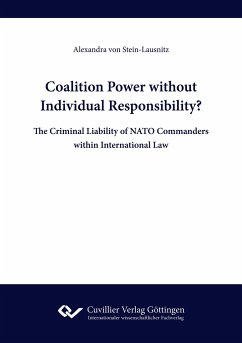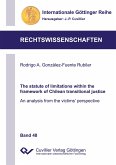This thesis deals with the individual criminal liability under international law of NATO commanders for crimes committed by their subordinates in the context of complex, multilateral command and control structures. After analysing the applicable law, the elements that must be fulfilled in order to be able to prosecute commanders and other superiors under the doctrine of Command Responsibility are comprehensively described and the Command, Control & Communication structures within NATO and in NATO-led operations explained. Subsequently, the doctrine of Command Responsibility is applied to the identified structures taking into account the role of a commander acting in a multilateral NATO operation, the role of the Troop Contributing Nation, the methods of conferral of powers as well as the de iure and de facto effective control of such a commander leading a multilateral force. Die vorliegende Arbeit befasst sich mit der individuellen strafrechtlichen Verantwortlichkeit von NATO-Befehlshabern nach dem Völkerrecht für Straftaten ihrer Untergebenen im Rahmen komplexer, multilateraler Befehls- und Kommandostrukturen. Nach einer Darstellung des anwendbaren Rechts, werden die Voraussetzungen für eine Vorgesetztenverantwortlichkeit von Befehlshabern und anderen Vorgesetzten umfassend beschrieben und die Führungs-, Befehls- und Kommunikationsstrukturen innerhalb der NATO und bei NATO-geführten Einsätzen erläutert. Anschließend wird der Tatbestand der Vorgesetztenverantwortlichkeit unter Berücksichtigung der Stellung eines Befehlshabers in einem multilateralen NATO-Einsatz, der Rolle des truppenstellenden Staates, der Methoden der Befugnisübertragung sowie der de iure und de facto wirksame Kontrolle eines solchen Befehlshabers auf die ermittelten Strukturen angewandt.








